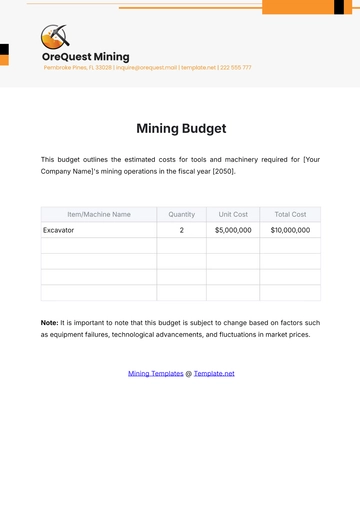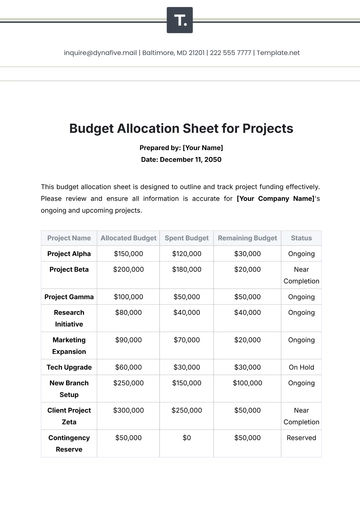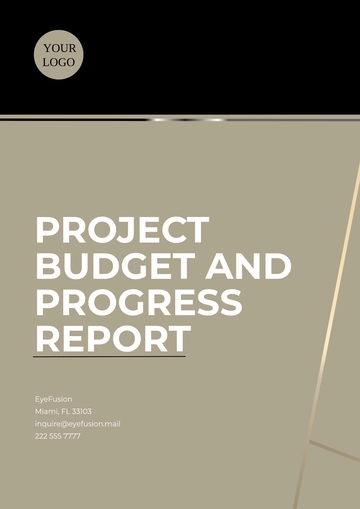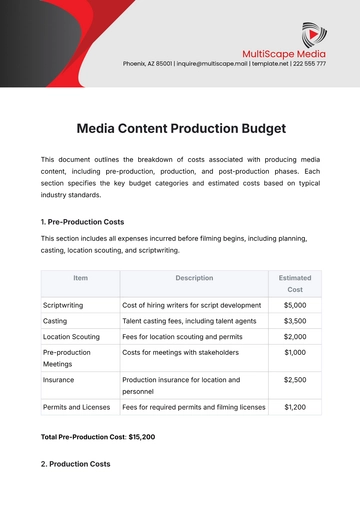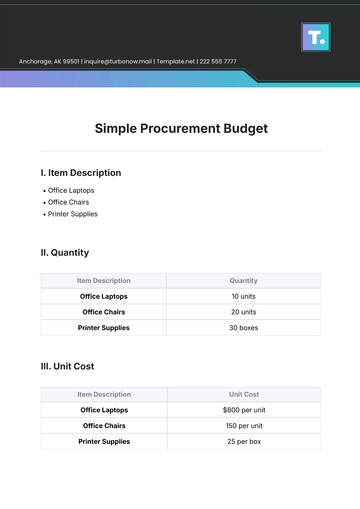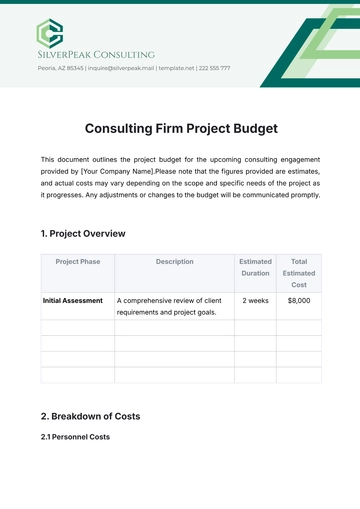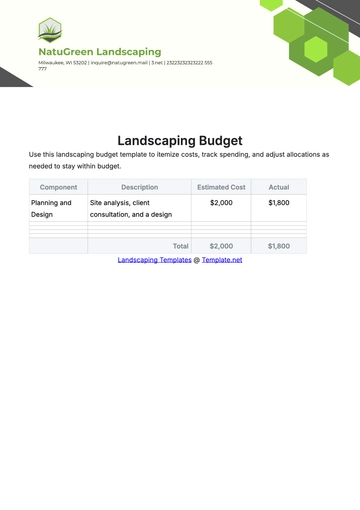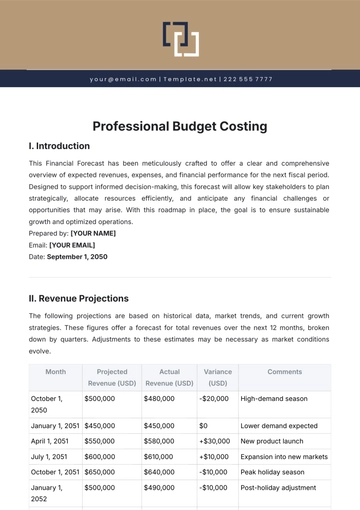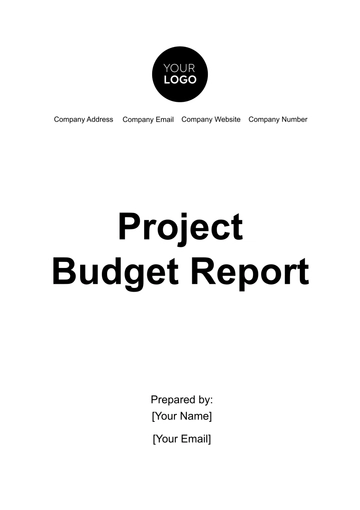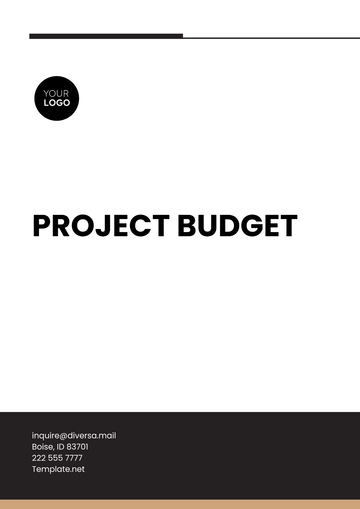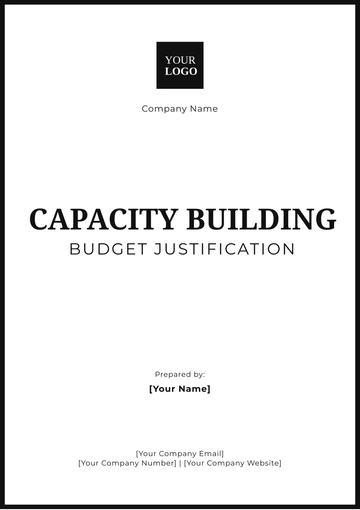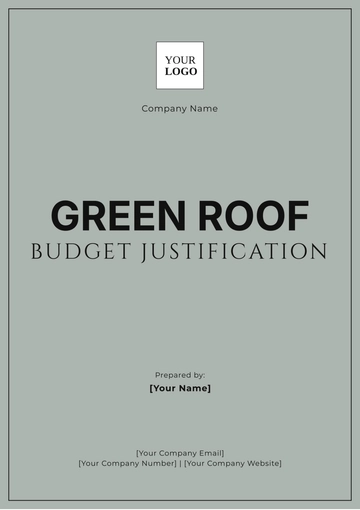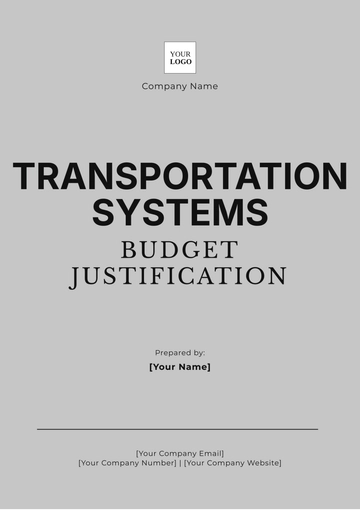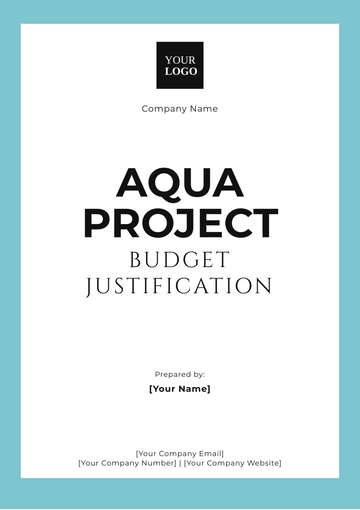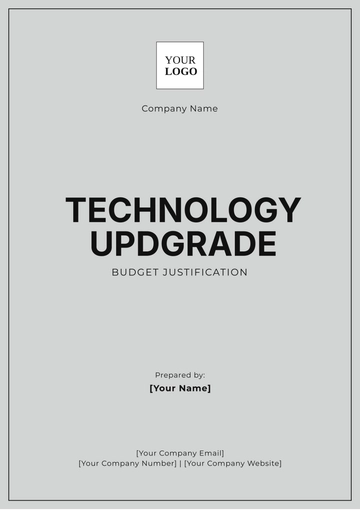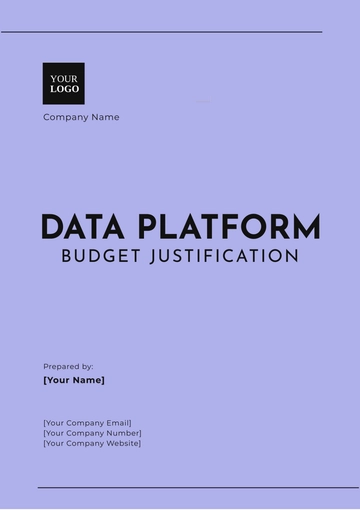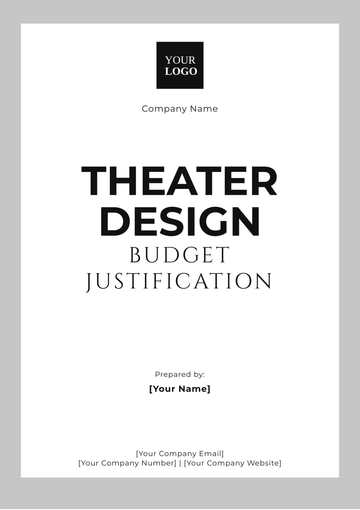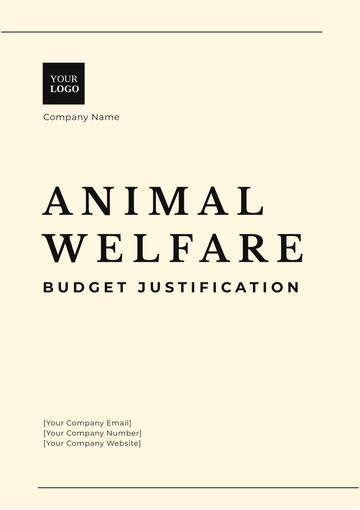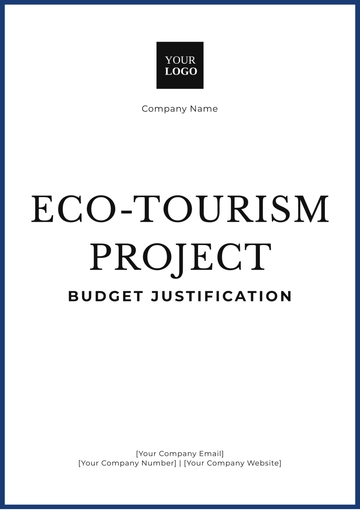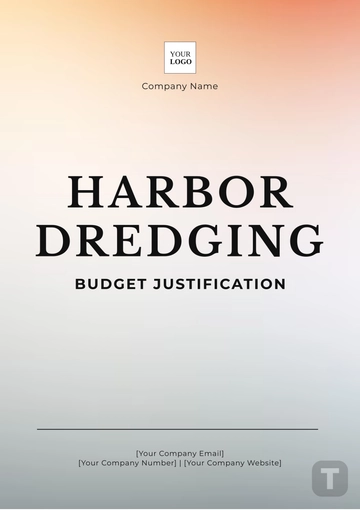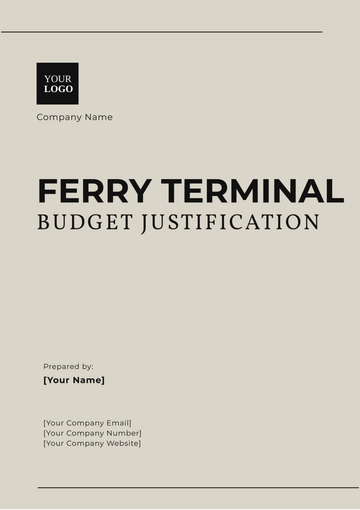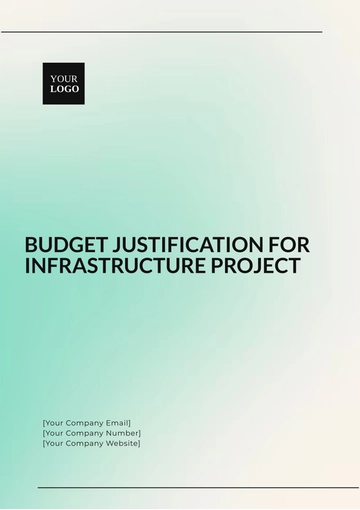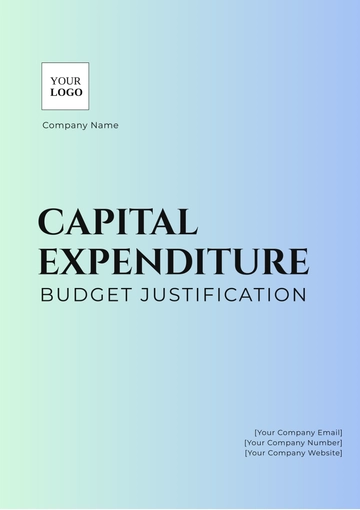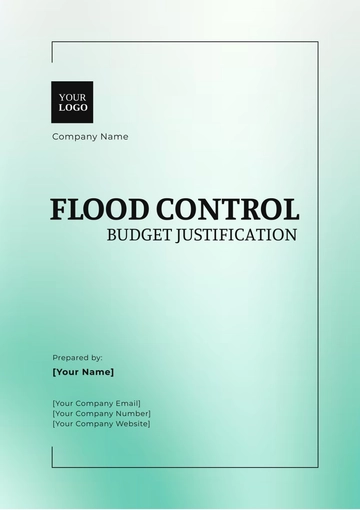Free Printable Project Budget
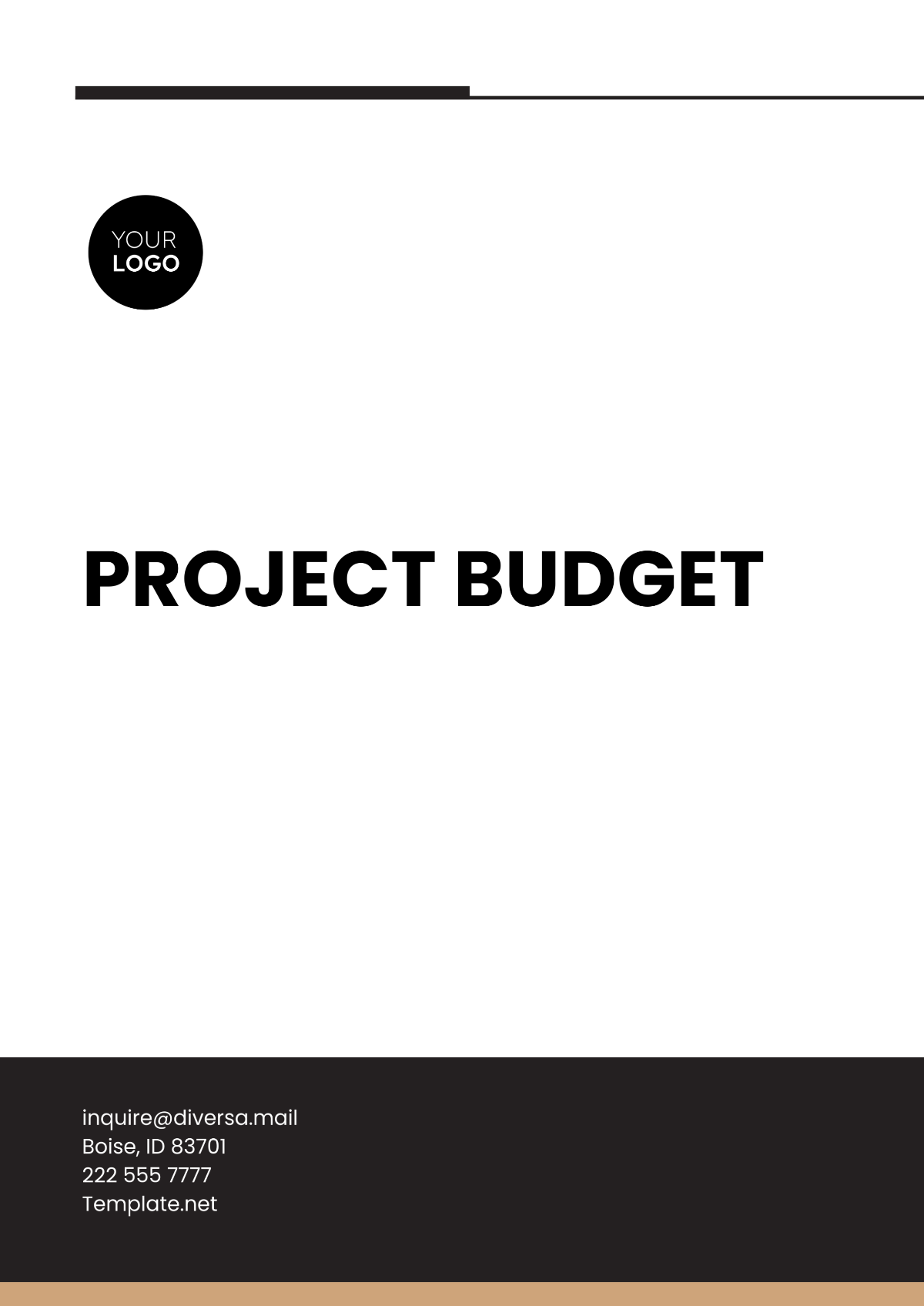
I. Introduction
This Printable Project Budget provides a detailed overview of the financial plan for executing a project. It ensures transparency, efficient resource allocation, and alignment with organizational goals. The placeholders included allow easy customization for your specific project.
II. Project Overview
Project Name: Solar Panel Installation Project
Project Manager: [YOUR NAME]
Contact Email: [YOUR EMAIL]
Company: [YOUR COMPANY NAME]
Start Date: January 10, 2051
End Date: December 15, 2051
III. Budget Breakdown
Below is the estimated budget for the project. Customize the amounts and items as per your specific project requirements.
Category | Description | Estimated Cost (2051) | Notes |
|---|---|---|---|
Labor | Salaries for team members | $50,000 | Based on 12 months |
Equipment | Tools and technology | $20,000 | Includes maintenance costs |
Miscellaneous | Contingency and other expenses | $5,000 | Allocated for unforeseen costs |
IV. Conclusion
This budget is a preliminary guide and should be reviewed periodically to ensure alignment with actual project needs. For additional details or revisions, contact [YOUR NAME] at [YOUR EMAIL] or visit [YOUR COMPANY WEBSITE].
- 100% Customizable, free editor
- Access 1 Million+ Templates, photo’s & graphics
- Download or share as a template
- Click and replace photos, graphics, text, backgrounds
- Resize, crop, AI write & more
- Access advanced editor
Keep your project finances in check with the Project Budget Template available on Template.net. This editable template helps you plan and monitor your project’s budget effectively. Editable in our AI Editor Tool, it includes sections for costs, expenditures, and financial tracking. Download now to manage your project budget with precision!
You may also like
- Budget Sheet
- Personal Budget
- Non Profit Budget
- Monthly Budget
- Project Budget
- HR Budget
- Company Budget
- Home Budget
- Weekly Budget
- College Budget
- Business Budget
- Construction Budget
- Small Business Budget
- Hotel Budget
- Annual Budget
- Home Renovation Budget
- Household Budget
- Student Budget
- Grocery Budget
- Marketing Budget
- Corporate Budget
- Startup Budget
- Manufacturing Budget
- Church Budget
- University Budget
- Annual Budget Plan
- Event Budget
- Operating Budget
- Travel Budget
- Food Budget
- IT and Software Budget
- School Budget
- Real Estate Budget
- Sales Budget
- Conference Budget
- Budget Finance
- Freelancer Budget
- Budget Advertising
